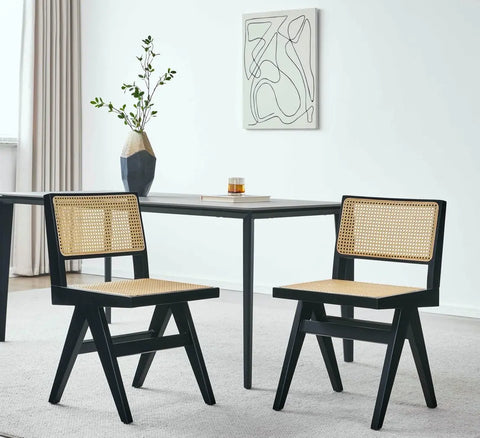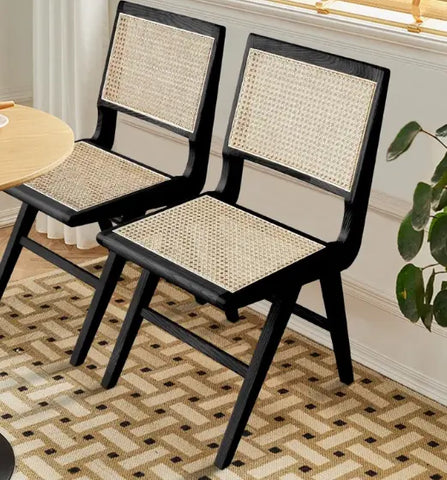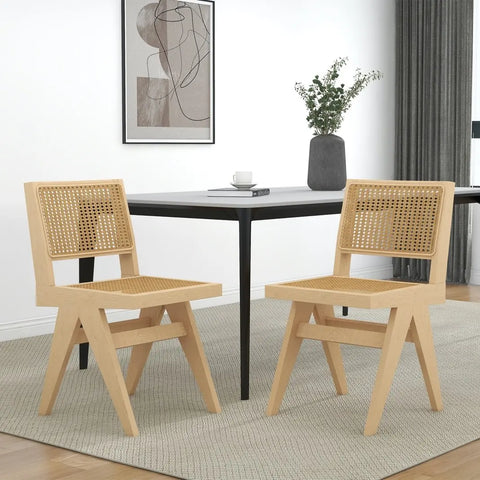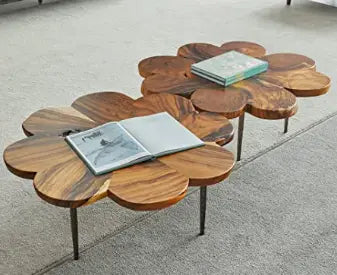What Kind of Wood Is Best for Furniture?
Navigation
- Softwood vs. Hardwood
- Common Types of Hardwoods
- Common Types of Softwoods
- Sustainability and Environmental Impact
- Durability and Maintenance
- Cost Considerations
- Conclusion
Crafting furniture is as much about choice as it is about skill. A key decision is picking the perfect wood - it shapes the furniture's aesthetics, quality, and resilience. Indeed, every wood type possesses unique traits that make it perfect for specific furniture designs.
In this article, we'll guide you through the tapestry of wood types best suited for crafting top-notch furniture. You'll also discover vital factors to consider when selecting lumber for your next project. Prepare to unravel the secrets of high-quality furniture making!
Softwood vs. Hardwood
Before delving into specific wood types, it's vital to comprehend the distinction between softwood and hardwood. Softwoods, such as Pine and Fir, are derived from cone-bearing trees and produce soft, lightweight wood with a straight grain. Generally, softwoods are less expensive and easier to work with but lack the durability of hardwoods. On the other hand, hardwoods, including Oak, Cherry, and Maple, originate from broad-leaf deciduous trees and produce dense, hard, robust wood with a distinctive grain pattern. While hardwoods might pose more of a challenge in terms of workability and cost, they generally provide exceptional longevity and result in furniture of superior quality. For the majority of furniture applications, hardwood emerges as the more beneficial choice.

Common Types of Hardwoods
Numerous hardwoods prove particularly suitable for the task of furniture creation.
- Oak: Standing as one of the most sturdy and enduring hardwoods, Oak serves excellently in the fabrication of heavy-duty furniture such as tables, bed frames, and chairs. It carries the benefit of high resistance to wear and corrosion, enhancing its overall durability.
- Maple: Maple wood displays a tight, even grain that lends an attractive appearance, making it a favored choice for furniture tops and veneers. Its qualities include being hard, stable, and shock-resistant. Moreover, Maple can be effortlessly stained or painted.
- Cherry: Known for its distinctive patterns and warm reddish-brown hue, Cherry's aesthetic appeal is significant. It is ideal for pieces where aesthetics are paramount, like tables, dining sets, and bed frames. Cherry also demonstrates excellent machinability and can be left unfinished to accentuate its natural beauty.
- Walnut: Characterized by deep brown shades and dramatic grain patterns, Walnut imparts a luxurious look. It is often selected for high-end furniture items such as entertainment centers, dining tables, and special accent pieces. Additionally, Walnut is quite durable and stable.

Common Types of Softwoods
While hardwoods are generally better suited for most furniture applications, some softwoods can also make good choices depending on the type of furniture and desired characteristics.
- Pine: Pine stands as the most prevalent softwood used in furniture making. Its advantages include being inexpensive, easy to work with, and accepting stains well. Pine is ideal for crafting budget-friendly furniture such as bookcases, bed frames, and simplistic tables. However, it doesn't offer the highest durability or longevity.
- Cedar: Cedar's natural oils confer resistance against decay and insects, making it a suitable choice for outdoor furniture and closet organizers. Although this particular variety of wood is soft, light, and has a straight grain structure, it lacks considerable strength. Many people enjoy the distinctive perfume that cedar generates.
- Douglas fir: This wood is excellent for beds, bunk beds, and long-lasting tables since it is generally sturdy, robust, and solid. This wood is inexpensive and simple to work with. With the right care, Douglas fir can survive for many years.
Softwoods like pine, cedar, and Douglas fir offer satisfactory performance for low- to mid-priced furniture. Hardwoods, on the other hand, typically offer more longevity, aesthetic appeal, and durability.
Sustainability and Environmental Impact
When choosing wood for furniture, it is also important to consider the sustainability and environmental impact of the different species.
Some wood types, like oak and maple, come from sustainably harvested forests where trees are planted and replanted. These are often considered more eco-friendly options.
Rosewood and mahogany, on the other hand, come from threatened forests in countries that do not carefully manage logging. Using these woods can contribute to deforestation and loss of biodiversity.
Certified sustainable wood, labeled with certifications like FSC and SFI, indicates that the wood comes from responsibly managed forests. This helps ensure trees are replenished, and forests remain healthy ecosystems.
More and more consumers are seeking sustainable wood options for their furniture. So when possible, choosing certified sustainable or replenishable species can reduce your environmental footprint and ensure future access to those wood resources. From an environmental and durability perspective, this makes species like oak, maple, cherry, and fir smart choices.

Durability and Maintenance
Regardless of the wood type, proper finishing and maintenance are essential to maximize the longevity of your furniture. All wood needs protection from moisture, UV light exposure, wear and tear, and insect damage.
For hardwood furniture, choose a quality oil or water-based finish like polyurethane. Reapply the finish every few years to replenish the protective layer as it wears off. Avoid placing furniture in direct sunlight. Also, use coasters and mats under hot dishes to protect the surfaces.
For softwood furniture, especially particle board, laminates are often a good choice since they create an impenetrable barrier that seals the wood. Laminates require little maintenance beyond periodic wiping cleaning.
Both hardwood and softwood furniture should be protected from spills immediately and dried thoroughly. Fix any wobbly or loose joints promptly to avoid further damage. Also, consider adding furniture or felt pads underneath to reduce vibration and wear on surfaces.
With the right wood choice, finishing, and maintenance, your furniture can provide years of beauty and functionality. The type of wood you select is one of the most critical factors in how long your furniture will last.
Cost Considerations
When considering what wood to use for furniture, the cost is a major factor for many people. Some general price points to keep in mind:
- Pine and other softwoods are the most affordable options, costing around $2 to $4 per board foot. They make economic choices for basic furniture.
- Cherry, maple, and walnut hardwoods typically fall in the mid-range, costing $5 to $10 per board foot. They offer good value for durability and appearance.
- Exotic hardwoods like mahogany and rosewood can climb significantly, from $10 to over $20 per board foot. They are best suited for specialty pieces where aesthetics outweigh cost concerns.
- Certified sustainable wood species may carry a small premium over non-certified options, though the difference is not large for most common wood types.
The cost of wood primarily depends on demand, accessibility, and how the lumber is milled. Labor costs and finishing options also factor into the price of custom furniture.
While hardwoods tend to be more expensive initially, they often provide the best long-term value since they last considerably longer before needing to be replaced. So when possible, focusing on durability over initial cost can yield the most cost-effective furniture in the long run. But for lesser-used items, softer Pine and other inexpensive woods may meet your needs at a lower price point.

Conclusion
In conclusion, the type of wood you choose for furniture significantly affects the result. Hardwoods like oak, maple, cherry, and walnut generally provide the best durability, aesthetics, and sustainability combination for most furniture applications. However, softwoods like Pine, cedar, and Douglas fir can offer acceptable performance at a lower cost, especially for basic items. Regardless of the wood species, proper finishing, maintenance, and repair will help maximize the lifespan of your furniture. When selecting lumber, considering factors like strength, appearance, environmental impact, and budget can help you choose the optimal wood type for your specific furniture needs. With the right wood and care, your furniture purchases can be sound investments that will serve you for many years.
Read More
- Natural Wood Chair:From Ancient to Modern – Way2Furn
- The Art of Minimalism: Incorporating Minimal Style Furniture in Your Home - Expert Tips – Way2Furn
- Discover the Best White Living Room Furniture for Your Home in 2023: A Complete Guide – Way2Furn
- Choosing the Right Wooden Table: A Comprehensive Guide – Way2Furn
- The Ultimate Guide to Choosing Industrial Office Furniture in 2023: Style, Comfort and Functionality – Way2Furn






















